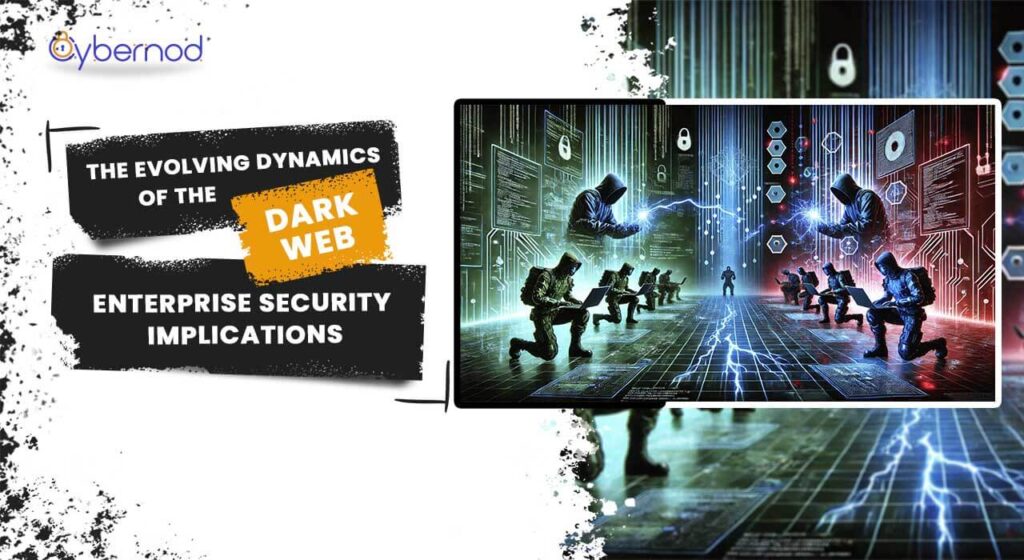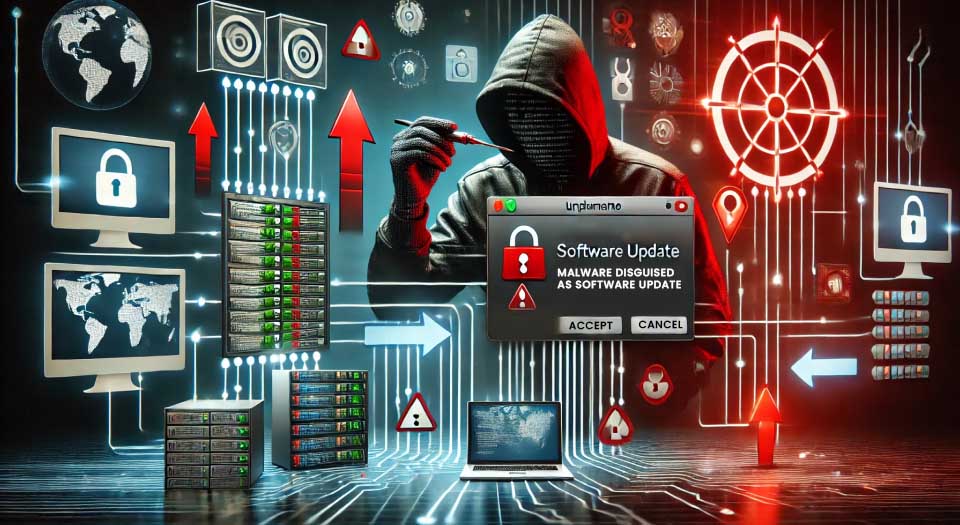
Dark Web: Advanced Threats and Law Enforcement Wins
The dark web is undergoing significant changes as organized cybercriminal networks adopt advanced tactics, offering services like “malware as a service” and establishing more robust infrastructures that support illicit operations. These developments elevate the challenges facing enterprise security, as threats become increasingly sophisticated. Yet, a growing concern for dark web actors is the risk of exposure and capture by law enforcement agencies. Authorities, despite facing obstacles in tracking hidden illegal activities, have achieved notable success in disrupting dark web networks and reclaiming criminal assets. A prime example occurred in 2020 when U.S. officials seized a $1 billion Bitcoin wallet linked to the now-defunct Silk Road, a notorious marketplace that once facilitated transactions in illegal drugs, hacking services, and even contract assassinations.
Cybercriminal Group Disbandments and Exit Scams
Faced with rising pressures and increasing law enforcement scrutiny, cybercriminal groups are adopting new methods to evade detection. One prevalent strategy is the “exit scam,” in which these groups suddenly close operations, often under the guise of a legitimate shutdown, and cash out before authorities close in. In late 2020, for instance, the Maze ransomware group—responsible for high-profile attacks on companies such as Xerox, LG, and Canon—announced a gradual shutdown over a six-week period, claiming they had ceased all activities. However, cybersecurity experts believe that such closures are often superficial, with group members reappearing under different aliases or merging into other operations rather than truly exiting the business.
Mark Turnage, CEO of DarkOwl, a leading dark web search engine, points out that “The dark net has undergone substantial changes, with organized criminal groups increasingly using anonymous forums and encrypted marketplaces.” The presence of young, technologically adept individuals influenced by online cybercrime narratives, alongside heightened law enforcement activity on the dark web, has shifted the landscape of these covert networks. As a result, criminal organizations are frequently rebranding and developing complex exit strategies to sustain operations, while law enforcement agencies continue efforts to infiltrate and dismantle these entities.
The Dark Web as a Platform for Criminal Recruitment

The dark web has transformed into a discreet recruiting ground where cybercriminal organizations selectively seek new members, only engaging minimally within these spaces before moving discussions to secure, private messaging platforms like Telegram, Jabber, and WickR. As Mark Turnage, CEO of DarkOwl, explains, many hackers and financial fraud specialists now focus less on traditional dark net marketplaces for sharing their tools and exploits. Instead, they use black hat forums across both the deep web and dark net to cultivate their reputations, attract followers, and recruit members. This trend is particularly pronounced within the ransomware-as-a-service industry, where establishing a trusted network of affiliates and co-conspirators is essential.
Moreover, DarkOwl’s research shows a notable shift as more technologically skilled criminals migrate to decentralized dark net platforms such as Lokinet and Yggdrasil. This change is a response to the vulnerability of Tor-based marketplaces, which face constant risk of law enforcement intervention and shutdowns. By decentralizing their activities, cybercriminals gain increased operational longevity and added protection against takedowns.
The movement of dark web marketplaces from Tor nodes to encrypted messaging services offers additional technical benefits, particularly against distributed denial-of-service (DDoS) attacks. These private channels provide dark web administrators with a more stable infrastructure, as highlighted by recent events where platforms like Empire faced DDoS extortion attacks, leading to their eventual shutdown and the loss of escrowed funds. Consequently, messaging apps like Telegram allow cybercriminals to rely on established, distributed networks, although the responsibility for DDoS protection now shifts to platform providers.
By consistently scanning these spaces, organizations can anticipate potential threats and reinforce their defenses, remaining a step ahead of emerging adversaries.
Illicit Activity within Legitimate Programs

Advanced Persistent Threat (APT) groups have increasingly turned to the dark web as a source of intelligence on their targets, using this information to mask data theft under seemingly legitimate network protocols and software. Vince Warrington, CEO at Dark Intelligence, explains that “many APT groups, especially those backed by nation-states such as China and Russia, now use the darknet not only to gather intelligence but to hide their data exfiltration activities under the cover of trusted network programs.” Previously, organizations primarily worried about discovering their proprietary data on the dark web. Today, however, APT groups employ complex strategies that rely on legitimate network activity to mask their operations, making detection considerably harder.
Since early 2020, research indicates a dramatic 200% increase in the use of secure protocols like SSH (via port 22) by these APT actors to gain unauthorized access. Once inside, attackers exploit weakly monitored and vulnerable systems, including industrial control environments, to steal vast amounts of data—often going unnoticed. In some cases, breaches have resulted in the theft of over a terabyte of sensitive data from individual organizations.
This threat was notably illustrated by the recent SolarWinds supply chain compromise, linked to the Russian espionage group APT29, or Cozy Bear. By exploiting the trust users placed in SolarWinds’ Orion software, attackers breached nearly 18,000 customers, maintaining covert access for months through what appeared to be legitimate updates. The attack likely involved prolonged surveillance and extraction of data without leaving clear evidence of infiltration.
These techniques present a new level of complexity in dark web monitoring, underscoring the need for security teams to adopt broader surveillance strategies. Relying solely on the dark web for signs of data leaks is no longer sufficient; threat analysts must expand their scope to include legitimate software, security updates, and supply chains where attackers could exploit vulnerabilities.
While traditional dark web monitoring remains important, cybercriminals are constantly evolving their tactics. For a deeper dive into the specific dark web threats impacting businesses in the UAE, along with practical steps for defense, consider reading our comprehensive guide: [Dark Web Criminal Activities: What Every UAE Business Owner Should Be Aware Of]
By continually assessing these trusted programs and supply chains, organizations can strengthen their defenses against sophisticated data exfiltration methods and proactively address threats that conventional monitoring might overlook.
Categorized in:
Tagged in:
AI, chatgpt, cloud security, Cybernod, cybersecurity, Dark Web, dark web markets, gold prices, UAE, weather
Comments